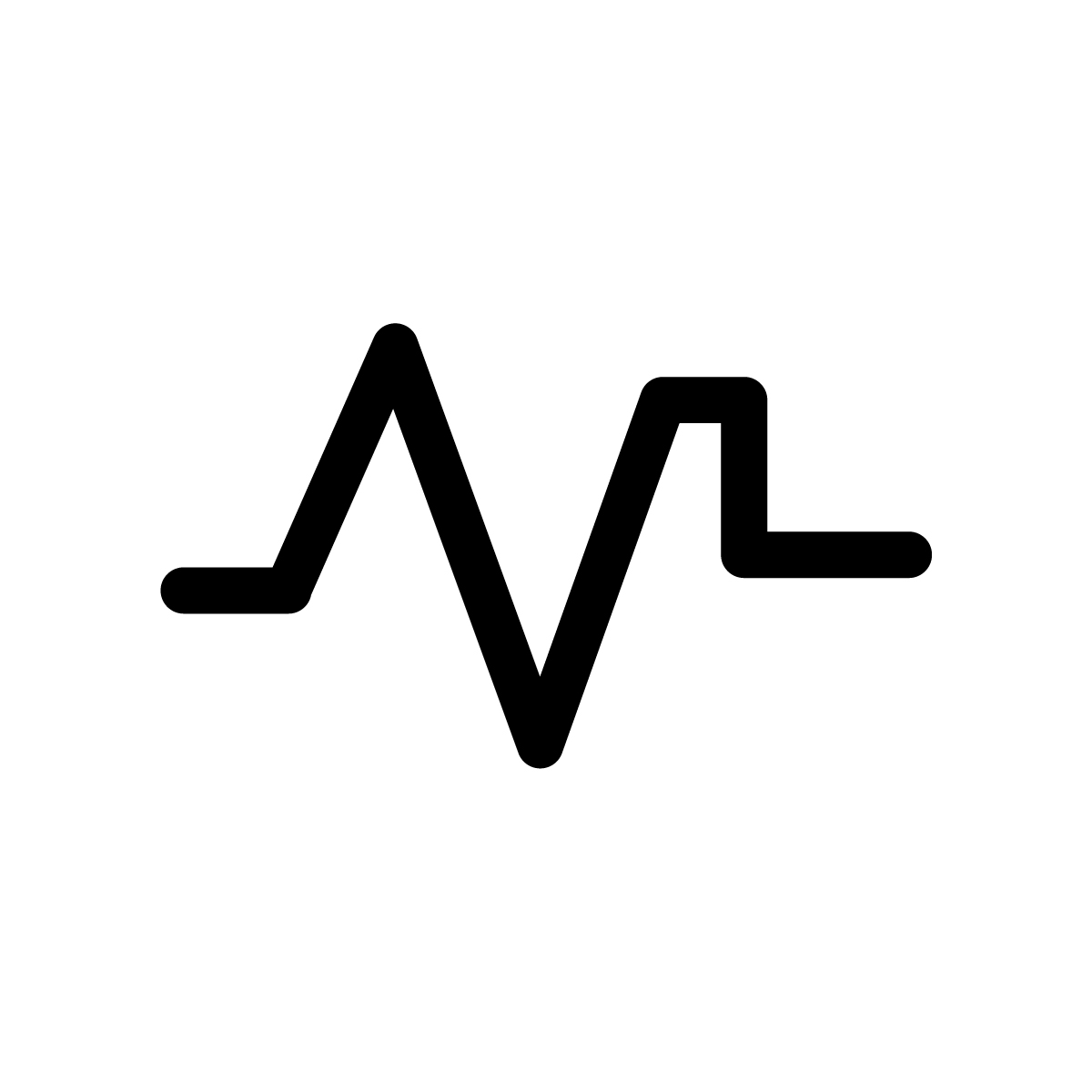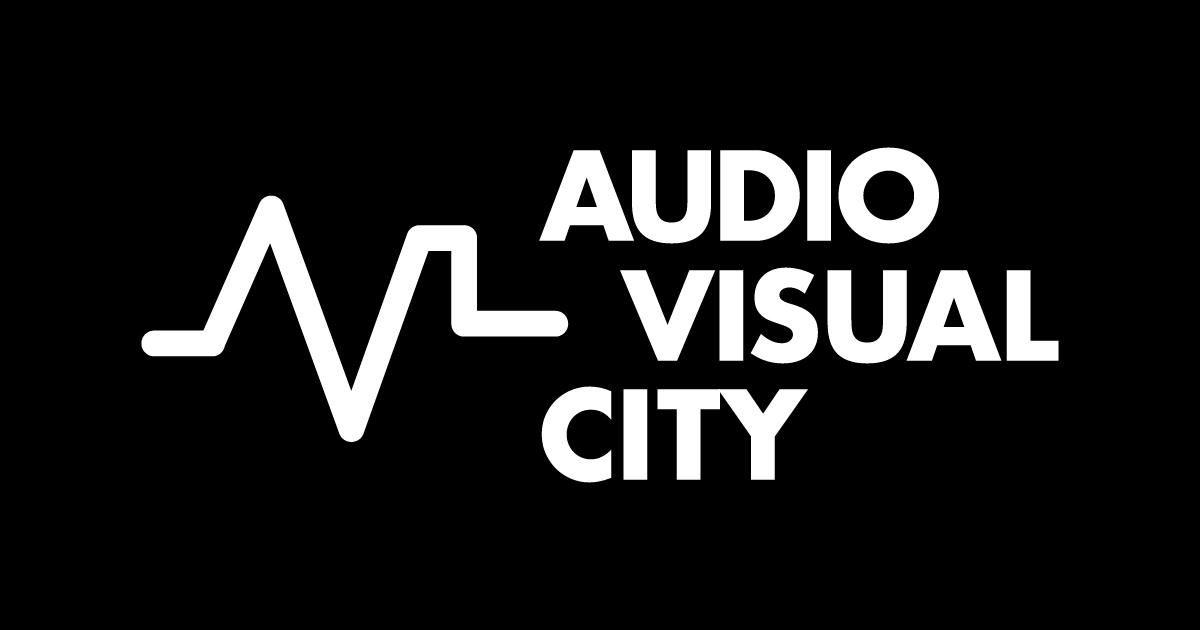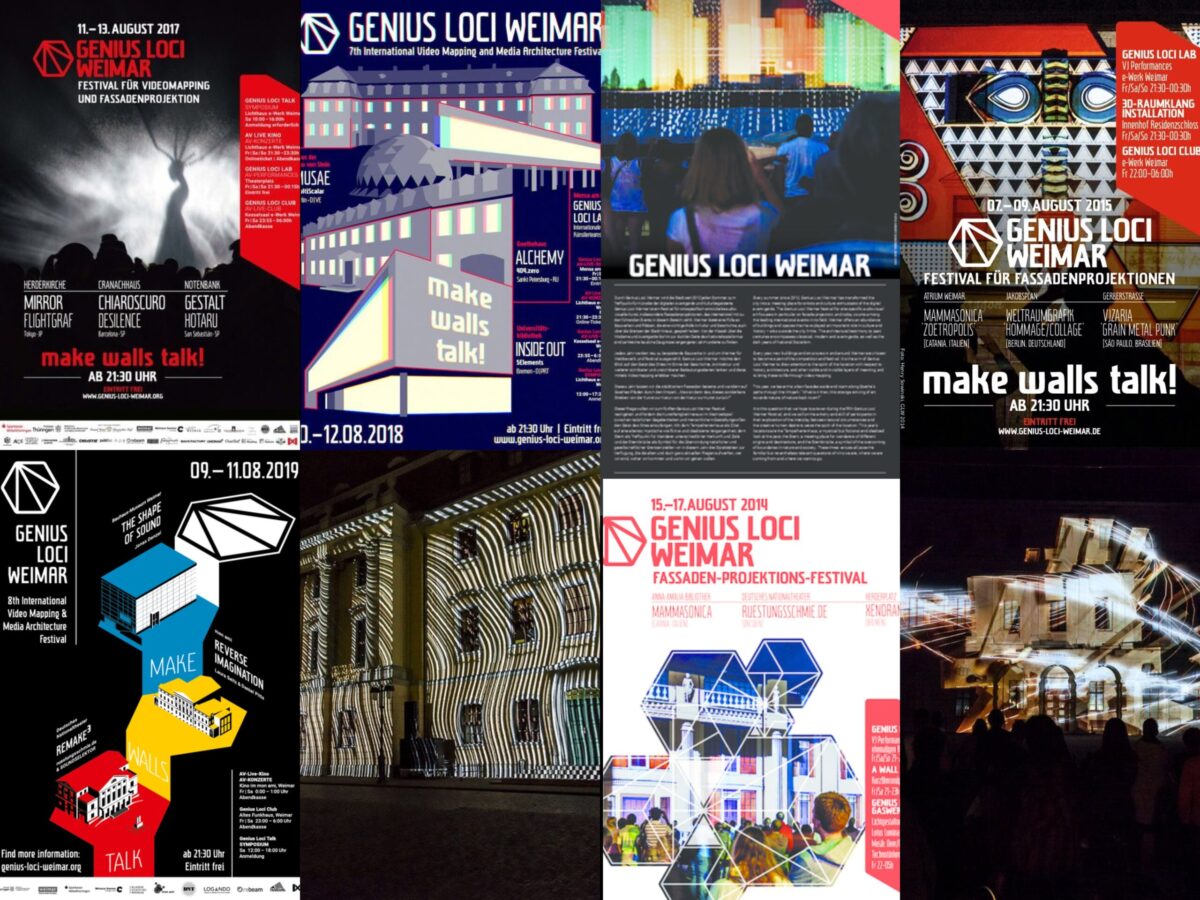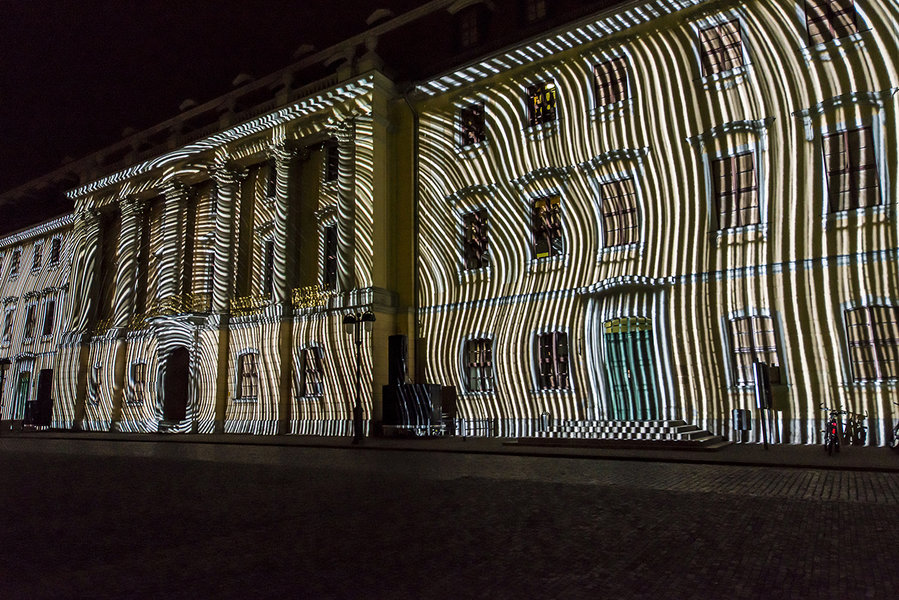We have supported Genius Loci Weimar and promoted their open call for audiovisual artists since their early start.
We felt now was the perfect time to interview the organizers of the projection mapping festival. One of the fastest growing audiovisual events in Europe. (German version below)
1. Can you tell us about the history, concept ans goals of Genius Loci Weimar?
The history of Genius Loci Weimar began 8 years ago, in 2012, when, as part of various regional development initiatives, we were looking for a concept that could combine modern media and historical heritage.
This is how the Genius Loci Weimar Festival came into being, initially on a smaller scale, which has since developed into an event with up to 50,000 visitors annually. The concept has always been to deal with the “spirit of the place” and its individual history, the “Genius Loci”.
We want to achieve several things with GLW: Always present is the goal of presenting aesthetically pleasing and high-quality artworks in Weimar. In addition, we also want to create a positive public and to address audiences of all ages and backgrounds throughout the festival.
As already mentioned, the “Genius Loci” is the focus of our artistic works. It is therefore also the goal to discuss history and to stimulate historical-cultural reflection, which certainly also has political and social aspects.
Another goal is to create and develop our own format, a brand that can provide a framework for the production of artistic works in this field.
The projection mapping scene is still quite young. Visibility, communication and networking are therefore also important concerns of our festival. Especially through the programme formats TALK, CLUB and LAB. There, in the LAB, the support and encouragement of young talents is increasingly taking place.
The AV media are to be further established as an art form and artistic format and to move away from the “avant-garde” or even “nerd corner”, in which they are still often located. To emphasize their potential as an aesthetic direction with different artistic styles and tastes is the goal of Genius Loci Weimar.
2. The festival advocates the importance of video mapping as an audiovisual tool to deliver relevant contents, rather than mere entertainment gimmick. How do you think GLW have been impacting the relationship between the community and the architectonic heritage of the city?
Thanks to the festival, a considerable exchange takes place every year on several levels within the city. The citizens of Weimar have become real “fans” of the festival and its formats and are curiously looking forward to seeing which new locations will be played at each year and can be experienced in new ways.
Thus, in addition to very prominent buildings such as the National Theatre or the Herderkirche in the city centre, the Ilmpark and a squatted house in Gerberstraße have already been in the spotlight.
Especially at controverse locations, such as Gerberstraße 3, exciting exchanges can arise: There, the “bourgeoisie” became observer of the usually sceptically eyed façade of the squatted house, the inhabitants of the house project became hosts at the same time – also for the otherwise avoided “establishment”. An exciting situation for everyone, which can only arise during a live event and on-site.
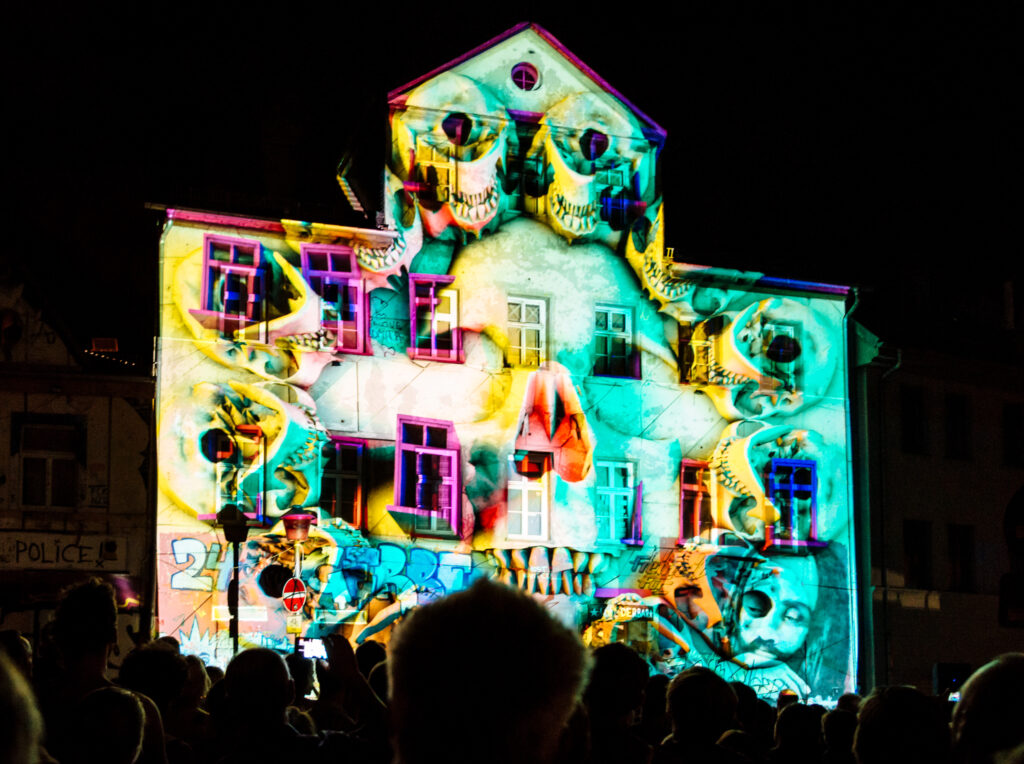
However, in any case, reflection is always encouraged: exchange and examination of past times and other lifestyles. The buildings also appear in new contexts, the library was once filled with fictitious visions or the theatre was shown as an important place of democracy. The selection and the type of performance should always have a very specific effect.
The fact that the concept is sustainable can be seen from the fact that other projection festivals are following up, launching similar strategies or even asking for a transferable concept.
In the end, the awareness for places and cities is always sensitized by the unique, site-specific spectacles.
3. GLW Open Call is the core of the festival. Can you explain the complex decision process you undertake every year to award the three prizes? Are there any project that have been particularly relevant for you in the past editions?
The audiovisual event starts already in spring with the publication of our Open Call and the announcement of the three competition buildings. A prize money of 15.000 Euro per building is awarded and we receive applications with artistic projects from all over the world during the competition period.
At the end of the competition, the applications will be judged by a jury of experts, while the public will also be able to vote at this early stage to decide who will perform their work in late summer.
During the past eight festival editions, a wide range of artistic styles were chosen as competition winners. Exciting, for example, was last year’s masterfully implemented, seemingly interactive audiovisual performance by Jonas Denzel on the façade of the newly opened Bauhaus Museum in Weimar.
Of 2016, the combination of live performance and video projection on a surface of water from Dieselqueen is also remembered.
Or the already mentioned mapping with the title “Grain Metal Punk” by VJZARIA on the façade of the squatted house in Gerberstraße.
4. During these uncertain times many audiovisual events decided to implement hybrid or online formats. Can you tell us about GLW position in the current scenario?
Genius Loci Weimar continues to believe in the presence and magic of live events. We continue to believe in video mapping as a unique, ephemeral and sensual event, accompanied by overwhelming sound and an immense size that can be experienced collectively in public space. This is why we continue to focus on the live event on-site.
5. How do you see Genius Loci Weimar in the next 10 years?
Genius Loci Weimar aims to further extend its constant growth path of recent years. As a festival and brand, GLW will continue to grow in breadth, but also in depth.
The reflective formats such as the relatively new TALK will continue to be expanded and refined. AV hybrids as a stage format, as has been the case with AV cinema in recent years, are also to be further developed and refined.
In the middle and long term, closer cooperation with universities is also conceivable, for example in the form of the creation of a new institute or similar. However, the core will always be the video and its connection to the historical heritage of the city!
Discover more about the audiovisual event
GERMAN VERSION
Können Sie uns etwas über die Geschichte, das Konzept und die Ziele von Genius Loci Weimar erzählen?
Angefangen hat die Geschichte von Genius Loci Weimar bereits vor 8 Jahren, im Jahr 2012. Im Rahmen verschiedener Initiativen zur Regionalentwicklung suchten wir nach einem Konzept, das es schafft, moderne Medien und historisches Erbe miteinander zu verbinden. Dabei entstand das Genius Loci Weimar Festival, zunächst in kleinerem Umfang, das sich inzwischen zu einer Veranstaltung mit bis zu 50.000 Besucher*innen jährlich entwickelt hat. Das Konzept war dabei schon immer die Auseinandersetzung mit dem „Geist des Ortes“ und seiner individuellen Geschichte, dem „Genius Loci“ eben.
Wir möchten mit GLW mehre Dinge erreichen: Immer präsent ist natürlich das Ziel, ästhetisch ansprechende und hochwertige Kunstwerke in Weimar zur Aufführung zu bringen. Dazu kommt aber auch der Anspruch, eine positive Öffentlichkeit zu schaffen und mit dem Festival milieu- und altersübergreifend Zuschauer*innen anzusprechen.
Wie schon eben gesagt steht der „Genius Loci“ im Mittelpunkt unserer künstlerischen Arbeiten. Es ist also auch Ziel, Geschichte zu thematisieren und zu einer historisch-kulturellen Reflexion anzuregen, die durchaus auch politische und gesellschaftliche Facetten in sich trägt.
Ein weiteres Ziel ist das Erschaffen und Weiterentwickeln eines eigenen Formats, einer Marke, die der Produktion von künstlerischen Arbeiten in diesem Bereich einen Rahmen geben kann.
Die Videomapping-Szene ist noch recht jung. Sichtbarkeit, Kommunikation und Vernetzung sind also auch wichtige Anliegen unseres Festivals, insbesondere durch die Veranstaltungsteile TALK, CLUB und LAB. Dort, im LAB, findet auch verstärkt die Nachwuchsförderung statt. Die AV-Medien sollen als Kunstform und als künstlerisches Format noch weiter etabliert werden und heraus aus der „Avantgarde-“ oder sogar „Nerd-Ecke“, in der sie noch teilweise verortet werden. Ihr Potenzial als eine ästhetische Richtung mit unterschiedlichen künstlerischen Stilen und Geschmacksrichtungen herauszustellen, ist Ziel von Genius Loci Weima
Das Festival befürwortet die Bedeutung von Video-Mapping als audiovisuelles Instrument zur Vermittlung relevanter Inhalte und nicht als bloßen Unterhaltungsgag. Wie hat GLW Ihrer Meinung nach die Beziehung zwischen der Gemeinschaft und dem architektonischen Erbe der Stadt beeinflusst?
Innerhalb der Stadt findet dank des Festivals jedes Jahr aufs Neue ein erheblicher Austausch auf mehreren Ebenen statt. Die Weimarer*innen sind inzwischen zu richtigen „Fans“ des Festivals und seiner Formate geworden und erwarten gespannt, welche neuen Orte jedes Jahr bespielt und auf neue Weise erfahren werden können.
So war neben sehr prominenten Gebäuden wie dem Nationaltheater oder der Herderkirche in der Innenstadt auch schon der Ilmpark und ein besetztes Haus in der Gerberstraße im Rampenlicht.
Gerade an kontroversen Orten, wie beispielsweise der Gerberstraße 3, können spannende Begegnungen entstehen: Das „Bürgertum“ wurde dort zum Betrachter der sonst so skeptisch beäugten Fassade des besetzten Hauses, die Bewohnerinnen des Hausprojekts wurden gleichzeitig zu Gastgeberinnen – auch für das sonst gemiedene „Establishment“. Eine spannende Situation für alle, die so nur im Moment eines Live-Events vor Ort entstehen kann.
Auf jeden Fall wird aber immer zur Reflexion angeregt: Austausch und Auseinandersetzung mit vergangenen Zeiten und anderen Lebenswelten. Auch die Gebäude treten in neuen Kontexten auf, die Bibliothek wurde einmal mit fiktiven Gebäudevisionen bespielt oder das Theater als Ort der Demokratie thematisiert. Die Auswahl und die Art der Bespielung sollen dabei immer eine ganz bestimmte Wirkung erzielen.
Dass das Konzept trägt, sieht man auch daran, dass andere Projektionsfestivals nachlegen und ähnliche Konzepte an den Start bringen oder sogar nach einem übertragbaren Konzept anfragen.
Letztlich wird immer das Bewusstsein für Orte und Städte durch die einmaligen, ortsgebundenen Spektakel sensibilisiert.
Der GLW Open Call ist das Herzstück des Festivals. Können Sie den komplexen Entscheidungsprozess erklären, den Sie jedes Jahr für die Vergabe der drei Preise durchführen? Gibt es Projekte, die für Sie in den vergangenen Ausgaben besonders relevant waren?
Das Festival beginnt bereits im Frühjahr mit der Veröffentlichung unseres Open Calls und der Bekanntgabe der drei Wettbewerbsgebäude. Pro Gebäude ist ein Preisgeld von 15.000 Euro ausgelobt und uns erreichen im Wettbewerbszeitraum Bewerbungen mit künstlerischen Projekten aus der ganzen Welt ein.
Nach Ende werden die Bewerbungen zum einen von einer Expert*innenjury beurteilt, und zum anderen kann auch das Publikum bereits an dieser frühen Stelle mit Hilfe des Public Votes mitbestimmen, wer im Spätsommer seinen Wettbewerbsbeitrag zur Aufführung bringen wird.
Während der vergangenen acht Festivaleditionen konnte eine große Bandbreite an künstlerischen Stilen als Wettbewerbssieger*innen gekürt werden. Spannend war zum Beispiel im letzten Jahr die gekonnt umgesetzte, scheinbar interaktive, audiovisuelle Performance von Jonas Denzel auf der Fassade des neu eröffneten Bauhaus-Museums in Weimar.
Aus 2016 ist aber auch die Kombination aus Live-Performance und Video-Projektion auf eine Wasserfläche von Dieselqueen in Erinnerung geblieben.
Oder das schon angesprochene Mapping mit dem Titel „Grain Metal Punk“ von VJZARIA an der Fassade des besetzten Hauses in der Gerberstraße.
In diesen unsicheren Zeiten haben sich viele audiovisuelle Veranstaltungen entschieden, hybride oder Online-Formate einzusetzen. Können Sie uns über die Position des GLW im aktuellen Szenario berichten?
Genius Loci Weimar glaubt auch weiterhin an die Präsenz und die Magie des Live-Events. An das Videomapping als einmaliges, vergängliches und sinnliches Ereignis, begleitet von überwältigendem Sound und einer immensen Größe, das kollektiv im Stadtraum erfahren werden kann. Deshalb fokussieren wir uns auch weiterhin auf die Live-Veranstaltung vor Ort.
Wie sehen Sie Genius Loci Weimar in den nächsten 10 Jahren?
Genius Loci Weimar will seinen konstanten Wachstumspfad der letzten Jahre weiter ausbauen. Als Festival und Marke soll weiter in die Breite, aber auch in die Tiefe gewachsen werden. Die reflektiven Formate wie etwa der noch recht neue TALK sollen auch weiterhin ausgebaut und verfeinert werden. Auch die AV-Hybride als Bühnenformat, wie beim AV-KINO in den letzten Jahren schon geschehen, soll noch weiter verfeinert werden.
Mittel- und Langfristig ist aber auch eine engere Kooperation mit Hochschulen, etwa in Form der Schaffung eines eigenen Instituts oder ähnliches denkbar
Kern wird aber immer das Video und seine Verknüpfung mit dem historischen Erbe der Stadt bleiben!
